Pão de Queijo delivers a perfect balance of crispiness and stretch with every bite. This Brazilian tapioca bread from sour cassava starch offers bold flavor and a light, airy texture that keeps you coming back for more.
I was swept off my feet when I tried pão de queijo for the first time and wondered what I had been doing with cassava starch.
Pão de queijo has a way of surprising your senses with its crisp outside and chewy inside.
Seeing the exterior will ignite curiosity, and you just know it’s not your usual buns or puff puff, like we have them in Nigeria.
You might notice how its texture feels different from everyday bread, thanks to sour cassava starch, which replaces wheat flour.
This gives it a slightly tangy note that plays well with the rich, melted cheese inside.
Its history stretches back to Brazil’s countryside, yet today you’ll find it enjoyed worldwide, popping up in cafes and kitchens beyond its roots.
Making it yourself is simple; just a few ingredients come together quickly, letting you add your twist with the cheese you prefer.
Whether you’re new to it or already a fan, this bread offers a fresh way to enjoy gluten-free baking with familiar, comforting flavors.
Recommended: Best Recipes from Tapioca
Table of Contents
- What is Pão de Queijo?
- What Makes Pão de Queijo Special?
- Nutritional Values of Pão de Queijo
- Key Ingredients for Pão de Queijo Recipe
- How to Make Pão de Queijo at Home (Pão de Queijo Recipe)
- Common Variations and Twists
- Common Mistakes to Avoid When Baking Tapioca Bread
- Storage, Reheating, and Freezing
- Pão de Queijo Around the World
- Frequently Asked Questions
- Conclusion
What is Pão de Queijo?
Pão de queijo, meaning cheese bread, also called tapioca bread, is a popular Brazilian snack that originated in Minas Gerais.
Made mainly from sour cassava starch and cheese, it has a crisp exterior and a chewy, stretchy inside.
It can also be made with cassava flour, but it may not be as stretchy as when sour cassava starch is used.
Naturally gluten-free, it’s a favorite for those with gluten sensitivities.
Dating back to the 18th century, pão de queijo was born in rural communities where farmers used local cheese and cassava flour to create a simple, nourishing food.
Over time, it became more than just a recipe; it grew into a symbol of Brazilian hospitality and tradition.
Today, pão de queijo is enjoyed not only across Brazil but also worldwide, celebrated for its unique texture and cultural roots.
Related: How to Make Cassava Flour Cookies
What Makes Pão de Queijo Special?
Pão de queijo catches your attention with its unusual ingredients and rich background.
It offers a different experience from typical breads, thanks to its unique mix that shapes its texture and flavor.
Gluten-Free Base: The Power of Sour Cassava Starch
When you bite into this Brazilian cheese bread, you’re tasting the result of sour cassava starch working its magic.
This ingredient replaces wheat flour and keeps the bread naturally gluten-free.
It gives the bread a chewy, elastic texture that you won’t find in regular breads.
If you avoid gluten or want something lighter, this bread feels satisfying without being heavy.
The starch expands as it bakes, creating that soft, airy inside you’ll love.
Flavor That Balances Cheese and Dough
Cheese is the heart of this snack’s flavor. Usually made with Minas cheese or similar types, the bread offers a rich, salty note that blends perfectly with its tender dough.
This mix gives you a warm, savory bite with a slightly tangy edge from the fermentation of the starch.
The crust crisps up just enough to add contrast, making every mouthful exciting and full of character.
A Perfect Match for Drinks and Moments
You’ll find that this Brazilian cheese bread fits right into many moments, whether it’s breakfast, a coffee break, or an evening snack.
Its flavor pairs well with coffee, tea, or even wine, making it versatile for casual or festive settings.
The balance of chewy dough and crunchy crust makes it easy to enjoy on its own or alongside your favorite drink.
This snack invites you to slow down, savor the taste, and share good times with others.
Related Posts
- Modified Cassava Starch: Properties, Production, and Applications
- Cassava Starch Glycemic Index
- Cassava Starch Alternatives
- Insights and Trends in the Native Cassava Market
- The Place of Cassava Starch in the Food Application Market
- Importance of Cassava Starch for Industries
- How to Make Tapioca Cheese Balls
Nutritional Values of Pão de Queijo
Understanding the nutritional content of pão de queijo can help you enjoy it mindfully.
This Brazilian cheese bread offers a balance of calories, protein, and fats, but also varies in carbs and sodium depending on the recipe and serving size.
Calories
Each small piece contains about 70 to 90 calories, making it a moderately energy-dense snack that provides a quick source of fuel without being overly heavy.
Carbohydrates
With 10 to 12 grams of carbs, mostly from tapioca starch, pão de queijo offers energy while staying gluten-free, which is helpful if you avoid wheat-based foods.
Protein
Pão de queijo provides 2 to 3 grams of protein, thanks to the cheese and eggs, helping support muscle repair and keeping you feeling satisfied between meals.
Fat
The 3 to 5 grams of fat come from cheese, oil, and eggs, adding flavor and richness but also contributing to the calorie content, so balance is key.
Fiber
This snack contains less than 1 gram of fiber since tapioca starch lacks dietary fiber, so it is not a significant source for digestive health.
Sodium
Sodium ranges from 150 to 250 milligrams, depending on the cheese and added salt, so be mindful if you’re watching your salt intake for health reasons.
| Nutrient | Amount per Serving | Explanation |
|---|---|---|
| Calories | 70 to 90 kcal | Provides moderate energy, making it a satisfying snack without being too heavy. |
| Carbohydrates | 10 to 12 grams | Mainly from cassava starch, offering gluten-free energy for those avoiding wheat products. |
| Protein | 2 to 3 grams | Comes from cheese and eggs, supporting muscle repair and keeping you full longer. |
| Fat | 3 to 5 grams | Derived from cheese, oil, and eggs, adding flavor and richness but increasing calorie count. |
| Fiber | Less than 1 gram | Low in dietary fiber as cassava starch contains minimal fiber, not a good source for digestion. |
| Sodium | 150 to 250 milligrams | Varies with cheese and added salt, important to monitor if limiting sodium intake. |
Key Ingredients for Pão de Queijo Recipe
To get that perfect pão de queijo texture and flavor, you’ll need some specific ingredients.
Sour cassava starch, known as polvilho azedo, plays the biggest role here.
Sour Cassava Starch: The Foundation of Texture

When you use sour cassava starch, you’re choosing an ingredient that brings the right chew and crisp to the bread.
This starch ferments during processing, giving the dough a slight tang that lifts the flavor.
Its gluten-free nature makes it ideal if you want a light yet satisfying snack that won’t weigh you down.
It’s the base that makes pão de queijo different from other breads.
Cheese Choices: Adding Flavor and Creaminess

Cheese shapes the flavor of your pão de queijo. Queijo Minas is the classic pick with its mild taste and creamy feel.
But you can mix it up with mozzarella for stretch or Parmesan for a sharper bite.
Blending cheeses gives you a richer flavor and lets you customize the taste to your liking.
The cheese melts inside, creating that gooey, comforting center you crave.
Eggs, Milk, and Fat: Bringing It All Together
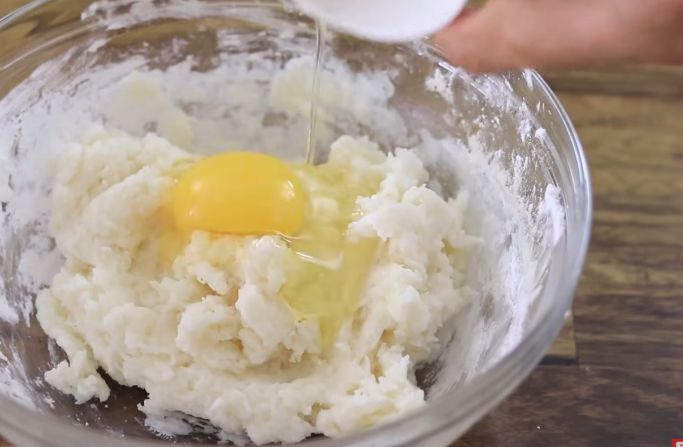
Eggs, milk, and a fat like oil or melted butter complete the recipe. Eggs help hold everything together and add richness.
Milk hydrates the starch and cheese, making the dough smooth and workable. The fat softens the crumb, giving you that tender bite.
Together, these ingredients balance the texture and flavor so you get pão de queijo just right every time.
How to Make Pão de Queijo at Home (Pão de Queijo Recipe)
Making pão de queijo at home is easier than you might think. With a handful of ingredients and simple steps, you can enjoy this chewy, cheesy Brazilian bread fresh from your oven.
Here’s a straightforward recipe to guide you through the process and get that perfect texture and flavor.
Ingredients: What You’ll Need
- 1 cup milk
- 1/2 cup vegetable oil
- 1 teaspoon salt
- 2 cups tapioca flour (glutinous cassava flour)
- 2 large eggs
- 1 cup grated cheese (Parmesan or Minas cheese works best)
Preparing the Dough: Heat and Stir
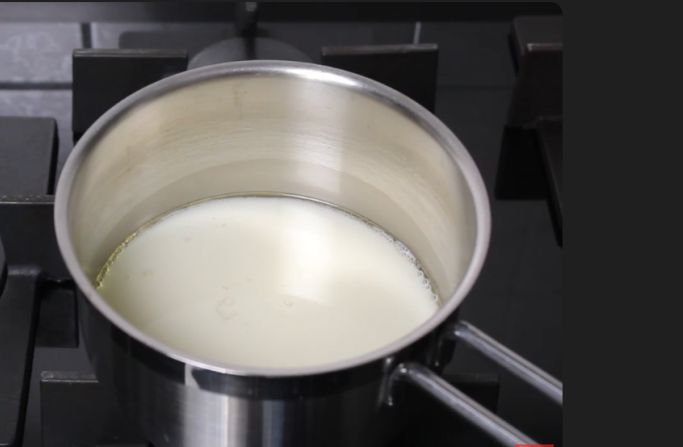
Start by warming the milk, vegetable oil, and salt in a saucepan over medium heat until it just boils.
As soon as it reaches a gentle boil, take it off the heat and add the tapioca flour. Stir quickly until the mixture forms a smooth dough.
This step helps the starch absorb the liquid properly, setting the stage for that signature chew.
Mixing in Eggs and Cheese: Getting the Right Texture
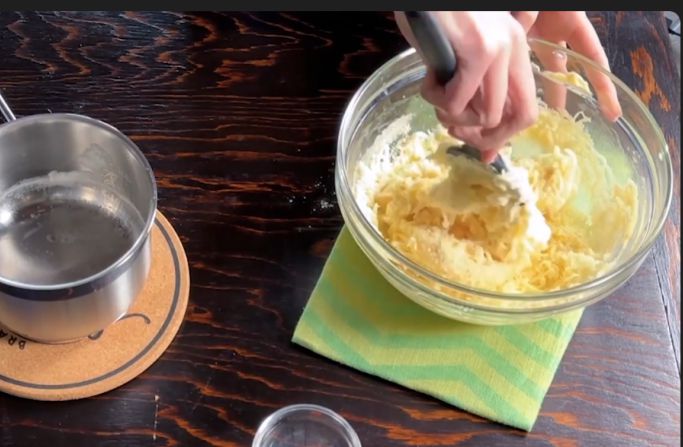
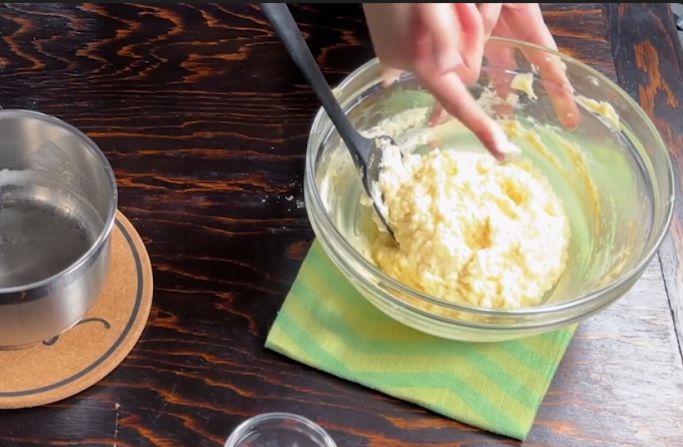
Let the dough cool slightly before adding the eggs one at a time.
This keeps the dough warm but not hot, so the eggs mix in smoothly without cooking.
After that, fold in the grated cheese, which adds flavor and moisture.
Stir well to combine everything evenly, making sure the dough feels elastic and soft.
Shaping and Baking: Perfect Puffs Every Time
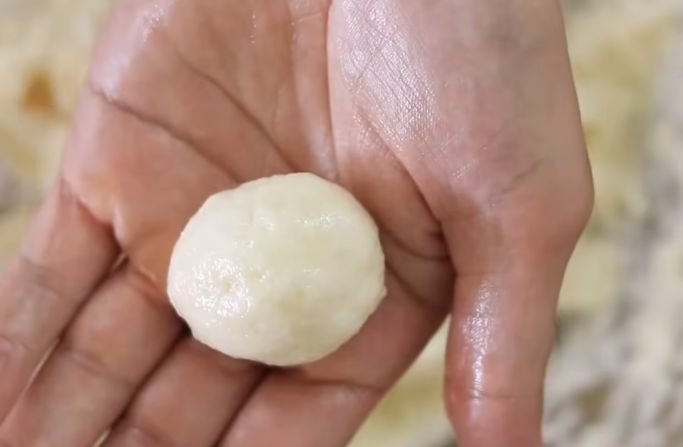
Prepare a mini muffin tin by greasing it or lining it with paper cups.
Spoon the dough into the molds, filling them about three-quarters full. Bake in your preheated oven at 375 degrees Fahrenheit for 15 to 20 minutes.
Look for golden tops that puff up nicely; this means your pão de queijo is ready to enjoy.

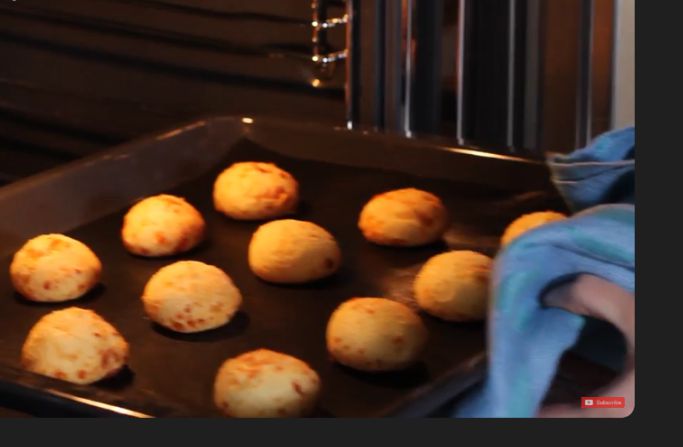
Common Variations and Twists
Tapioca bread has become more than just a traditional snack. You can find plenty of ways to change it up and make it your own.
These twists bring fresh flavors and textures that fit different tastes and diets.
Let’s look at some popular variations you might want to try next time you bake or buy pão de queijo.
Stuffed Pão de Queijo: Adding More Flavor and Texture
If you like a little surprise in every bite, stuffed pão de queijo is a great choice.
People fill them with cream cheese for a smooth, rich center or with seasoned ground meat for a savory boost.
These stuffed versions turn the snack into something more filling and exciting.
You get the classic chewy exterior with an extra layer of flavor inside that keeps you coming back for more.
Vegan and Dairy-Free Options
If you follow a vegan lifestyle or avoid dairy, you’ll appreciate the plant-based takes on pão de queijo.
Instead of cheese, some use nutritional yeast to add a cheesy taste, while almond or cashew cream brings creaminess.
Since the bread is already gluten-free thanks to tapioca flour, these tweaks keep the texture true to the original while making it friendly for more diets.
Sweet Variations: A Dessert Twist on a Classic
Looking to satisfy your sweet tooth? Sweet versions of pão de queijo mix things up with ingredients like shredded coconut or dark chocolate.
These versions create a soft, slightly chewy treat that contrasts with the savory original.
Trying these can be a fun way to enjoy pão de queijo in a new light and add a little dessert to your snack routine.
Cheese Blends and Flavor Boosters
Mixing different cheeses is a simple way to personalize pão de queijo.
Combining mozzarella with sharper cheeses like Parmesan or cheddar adds layers of flavor and richness.
You can also add herbs or spices like garlic or rosemary to give it a fresh twist.
These small changes help you craft the perfect bite, whether you want something mellow or packed with flavor.
Common Mistakes to Avoid When Baking Tapioca Bread
Baking tapioca bread at home is simple, but a few small mistakes can affect how it turns out.
Here are common errors you might make and how to fix them for a perfect batch.
Using the Wrong Type of Starch
Regular cassava or tapioca flour will not give you the same result. Sour cassava starch (polvilho azedo) is what creates the chewy texture and slight tang that defines pão de queijo.
Overheating the Milk and Oil Mixture
If the liquid boils too hard, it may cook the starch unevenly or clump when mixed. Gently heat the mixture until it begins to bubble, then remove it immediately.
Adding Eggs While Dough Is Too Hot
Adding eggs to hot dough can cook them, ruining the texture. Let the mixture cool for a few minutes before mixing in the eggs, one at a time.
Skipping Proper Mixing
Inconsistent mixing can leave unmixed flour or cheese chunks. Mix until everything is well combined and the dough feels smooth, stretchy, and ready for shaping.
Overfilling the Muffin Tin
Too much dough in each cup leads to overflow and uneven baking. Aim to fill each mold about three-quarters full to allow the dough to puff properly.
Using Cold Ingredients
Cold milk, eggs, or oil can shock the dough and make mixing harder. Let your ingredients sit at room temperature before starting to help everything blend smoothly.
Storage, Reheating, and Freezing
Keeping your pão de queijo fresh and tasty depends a lot on how you store and reheat it.
Taking a few simple steps can help you enjoy that crispy outside and chewy inside even after baking.
Here’s how to make your cheese bread last longer and taste great every time.
Storing
To keep your Brazilian cheese bread from drying out or getting stale, put leftovers in an airtight container.
This traps moisture and protects the bread from air exposure. Ideally, eat it within a few days for the best texture.
If you want to keep it longer, freezing is your best bet.
Proper storage preserves both flavor and texture so you can enjoy it later without losing that signature chew.
Reheating Tips: Bring Back the Crispness
Microwaves are quick, but can make your pão de queijo rubbery and soft.
Instead, heat it in the oven at 350 degrees Fahrenheit for about 10 minutes.
Place the bread directly on a rack or baking sheet to help the crust get crispy again while warming the inside.
This method revives the bread’s original texture and flavor much better than any quick fix.
Freezing Dough or Baked Bread: Plan for Freshness
If you want to freeze pão de queijo dough, shape it into balls first and freeze them on a tray.
Once frozen, move them to a freezer bag so they don’t stick together.
You can bake these straight from the freezer by adding a few extra minutes to the cooking time.
For baked pão de queijo, let them cool completely before freezing in a sealed bag or container.
This way, you’ll always have a fresh snack ready whenever you want.
Pão de Queijo Around the World
Pão de queijo has traveled far beyond Brazil, winning hearts with its crispy outside and chewy, cheesy inside.
You can now find it in cafes and restaurants from New York to London and Lisbon.
Its growing popularity owes much to its gluten-free nature and the demand for tasty alternatives to wheat products.
Let’s look at how this snack fits into different food cultures and why it continues to spread globally.
Global Popularity: From Brazil to Your City
You might be surprised to find this Brazilian cheese bread on menus far from Brazil. Its chewy texture and cheesy flavor attract food lovers everywhere.
Many places have started offering their versions, sometimes adding local cheeses or spices to suit different tastes.
Its gluten-free base appeals to those avoiding wheat, making it a favorite among health-conscious eaters and foodies alike.
Gluten-Free Appeal: Meeting Modern Dietary Needs
If you follow a gluten-free diet or know someone who does, you’ll appreciate how pão de queijo fits that lifestyle.
Made with tapioca flour, it naturally avoids gluten, offering a tasty option for snacks or breakfast.
It’s easy to see why it’s gaining traction among people who want flavorful, satisfying food without gluten’s drawbacks.
Similar Treats: Comparing with Gougères and Others
Pão de queijo shares some traits with other cheese breads like the French gougères.
While gougères are light and airy thanks to choux pastry, pão de queijo has a denser, chewier bite because of cassava starch.
Both bring that irresistible cheesy puffiness but offer different textures.
This comparison shows how cultures create their takes on cheesy baked goods that bring people together.
Cross-Cultural Connections: A Taste That Travels
As pão de queijo becomes more popular worldwide, it acts like a food ambassador, connecting Brazil with other cultures.
Each new place adds its twist, but the heart of this cheese bread remains the same.
This shared love for savory, cheesy snacks shows how food crosses borders and builds bridges, one bite at a time.
Frequently Asked Questions
Is pão de queijo healthy?
Pão de queijo is gluten-free and made with simple ingredients. It’s lower in carbs than wheat bread but still contains fats and cheese, so enjoy in moderation.
Can I use regular flour instead?
Regular wheat flour changes the texture completely. It won’t be chewy or stretchy like traditional pão de queijo because tapioca starch creates that signature puff and elasticity.
Why didn’t mine puff up?
If it didn’t puff, it could be due to old starch, overmixing, or an oven temperature too low. Fresh ingredients and a hot oven help puff up.
Can I make it without eggs?
Eggs provide structure and moisture, but you can use substitutes like flaxseed or chia gel. Expect a softer texture and less rise without eggs.
What’s the best cheese combo?
A blend of Minas or mozzarella for stretch and Parmesan for sharpness creates rich flavor and perfect gooey texture. Feel free to experiment with your favorites.
Conclusion
Pão de queijo offers a delicious combination of crispy crust and chewy inside that has captivated food lovers worldwide.
Its gluten-free base from sour cassava starch makes it a welcoming choice for many diets.
Whether enjoyed plain or stuffed with creative fillings, this Brazilian cheese bread fits various tastes and occasions.
Making it at home is straightforward, letting you experiment with cheeses and flavors.
Its growing international presence highlights how a simple snack can connect cultures through food.
If you want a treat that blends tradition with versatility, pão de queijo is a snack worth trying again and again.
References

Chimeremeze Emeh is a writer and researcher passionate about Africa’s most transformative root crop—cassava. Through his work at cassavavaluechain.com, he explores the entire cassava industry, from cultivation and processing to its diverse applications in food, health, and industrial use.
He also writes for palmoilpalm.com, where he shares his extensive experience and deep-rooted knowledge of palm oil, covering red palm oil, palm kernel oil, and refined products. His work there reflects his lifelong connection to agriculture and his commitment to promoting sustainable value chains in Africa.
Driven by curiosity and purpose, Chimeremeze aims to shed light on how cassava continues to empower communities, strengthen food systems, and link traditional farming wisdom with modern innovation.

